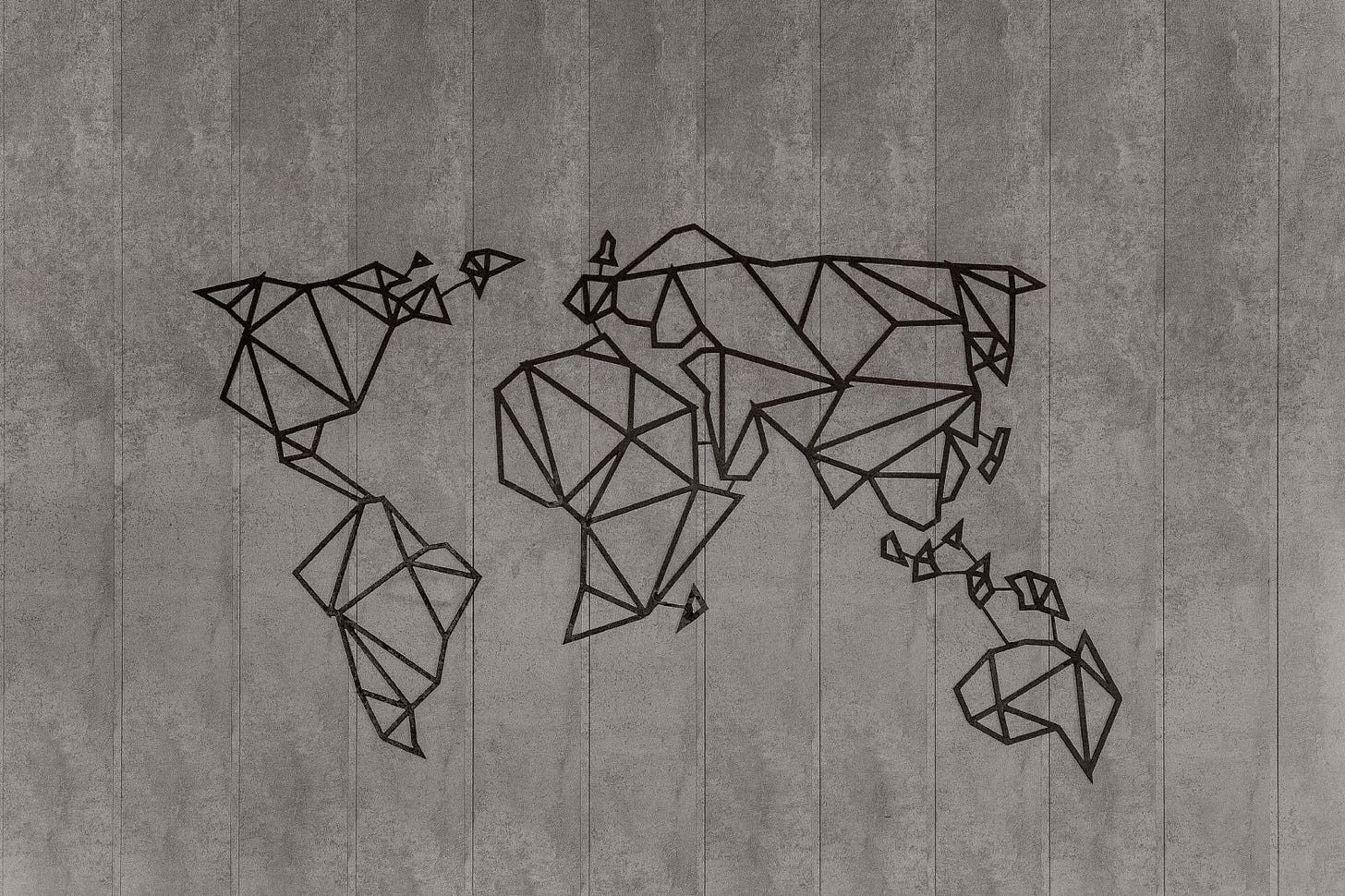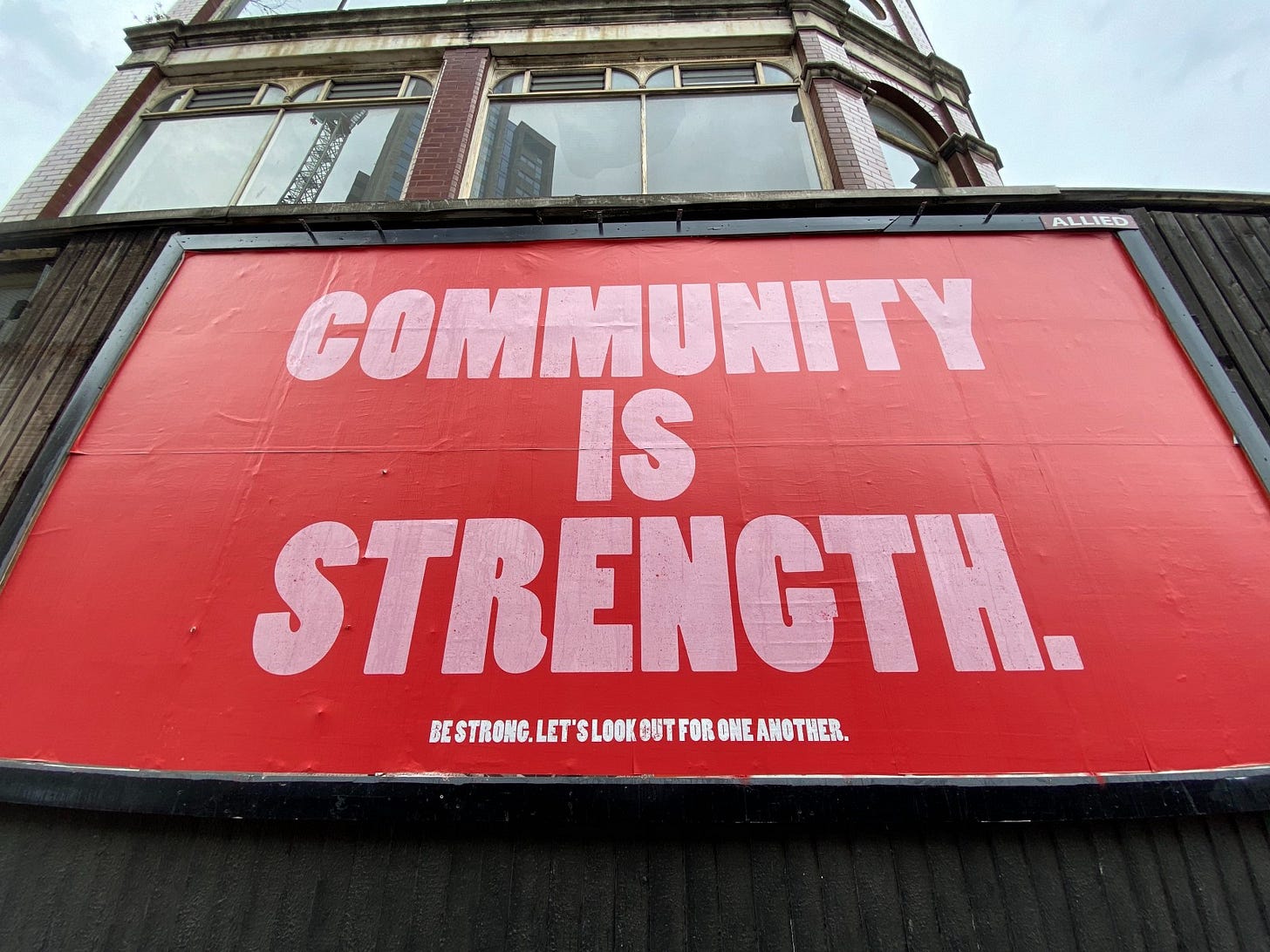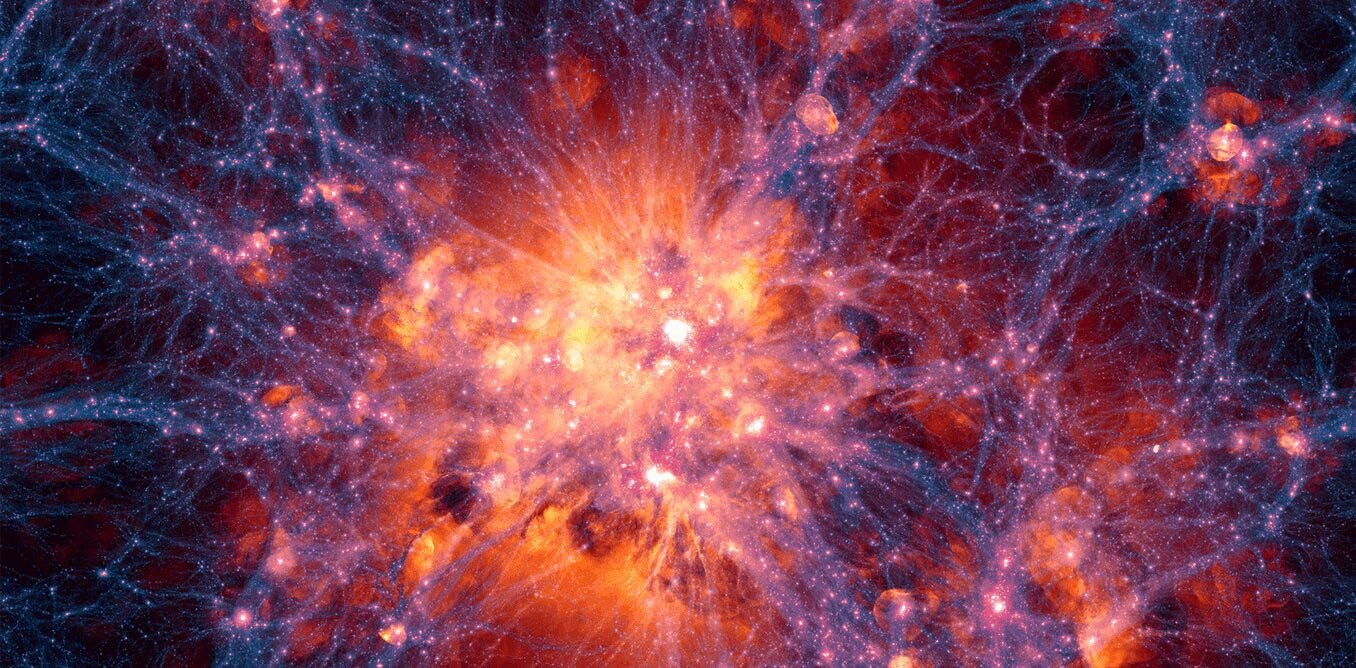Why can't a community be a country?
Communities have always been confined to operating inside a country as the costs of governance, value transfer, communications have needed the scale of a country. Web3 rewrites this.
As we move into web3, new ways of working together are appearing that aren’t limited by the old manual ways or their digital copy that is operational and cost-effective.
Most of what we have done before has been a reflection of the manual way we have done things, but web3 brings a whole new communication and ownership model that allows some of these old ways to be rewritten.
What are we doing now?
Let’s consider how we work together to make things happen as a group. The first significant grouping we all understand is a country where we are part of a physical location. To allow us to work together in this space, four core infrastructure models are in place.

One is the governance model, which is government, law and enforcement. We may have checks and balances for this, but who has the most influence has won at the end of the day.
The following model is value transfer. The most significant part of this is the money movement that the banks run (regulated and unregulated) which follows the rules of returning profits to their owners and not the community where they started. They also manage the economy in many ways through their activities, usually partially constrained by the governance part of the country. In many cases, they are about extracting value for this activity, which is the business part and follow a short-term view.
The next part is communication and how we connect. The communication process runs through the telecommunication and media businesses running a business-centric model in most cases partially regulated by the governance side. These businesses cover our telcos, media and the world’s Google, Facebook and Apple.
The last part is much harder to qualify as more linked to beliefs and culture as they impact how we see things but also cause problems, especially when many are trying to run their agenda and we are locked in from moving.
With these four pieces, we must operate our communities inside these rules in most cases and follow those restrictions.
The biggest problem is these models have been built over a long time, with bais becoming inground into each system to benefit particular subgroups as a country is made up of many communities. This causes conflict and disadvantages, for different groups, through this imbalance. The first interactions of the internet sped up communication that allowed us to work across borders. But, all it did was grow the interconnections and speed of this, which has bought new problems that countries are struggling to manage, which the multinational companies have risen to exploit.

Moving forward
We are now all connected worldwide across country borders to bind communities and not needing the same level of physical connection that the country model is built on.
With the new web3 model, we can now potentially think of a community as a country in its own right. This couldn’t happen before because the old methods are built on many slow manual systems to make them work, which works well when you have millions of people to help cover this cost.
Why does web3 allow us to restart this?
Web3 is about ownership, the missing part, and not needing people to be part of this which now makes this available to communities to operate like a country and not need millions of people to cover the costs involved.
Governance is where the DOA (decentralised autonomous organisation) comes into play. A DAO is where a community can set rules (smart contracts), vote and influence how the community is in an open model and do this in a near-constant manner if they want. But to get this started requires a model of education and transition, and what is coming out is a progressive model of conversion to a full DAO model, with it starting centralised and a road map to the full decentralised model. The voting model that the DAO brings using the web3 models allows us to move from one person, one vote or the shareholder ownership vote to a vote based upon your contribution to the community. We see that the more you give, the more influence you have, but once you stop, your influence will decrease, and this can be encoded into the law of the smart contracts that run this. It will be quick and easy to vote, but also where you are accountable for your vote, which creates a new dynamic.
Value transfer is an integral part of any community and needs to be an open model to remove any conflict. They then support each other and recognise the work each brings to the community. The key is what the banking model does for us in the country model, but it needs to be community owned in many ways and run through the power of smart contracts and not the current people model making decisions. There is a utility token that is a stablecoin linked coin to the country of the community member. This is because allowing people to come and go from the community and return capital to them allows a community to grow and evolve. We see this pain in the country model, where governments use the power of passports to control movement as they see their citizens as an asset (another story in its own right).
The next level of this is the utility token that passes end to end instead of having to sit somewhere and incur costs for this that we have covered in another blog (link). Vault3 is the direct work we are doing. Once value transfer is end to end instantly, we have a direct connection with each other which has a psychological impact that we have lost with the current banking system and the multiple intermediaries.
On top of this is the NFT which is the deed of ownership and licence management that allows community members to be rewarded for their work or offer new ways of accessing it.
The final part of value transfer is where we can support each other through the power of loans using Defi, an umbrella term for peer-to-peer financial services on public blockchains that run on smart contracts. With this, we know they will be paid based on actions, not on a whim, which happens currently, especially in small businesses that are very cashflow dependent.
Communications is the next requirement level, where being part of the DAO and value transfer model allows you to be part of a private network, as each gives you rights to communicate. Current communication models mean we don’t have control of this, whereas being part of a community, you now have control and can be based on your activity. We see the NFT as the core of this as it has the deed of rights of access attached to it and can act as your identity. With this, you now control and own your data and can decide who and what is shared.
Belief and Culture are a core part of a community and are the glue. This part cannot be encoded as this is about people, so it comes down to clear, trusted communication and vision. This is where making it easy for people to come and go is an integral part, as when you control this, the vision can become corrupted as people try to protect it, where in fact, a community is a living organism and should be allowed to grow and develop. Something a country can’t do as borders and resources limit them, while a community has none of these limits, then it comes down to ideology, and if you disagree, you can contribute or move on.

Making this real
The work we are working towards is the creation of frameworks where this happens. We have started two parts of this, with Vault3 being the first part. Vault3 is a private micro community clearing house that will grow into a community-owned services bank that manages the smart contracts for moving value through the community and the interface into the local countries of each member. As we see, the core value transfer needs to be in place for a community to come into being, as the DAO, Defi, and other services will depend on this.
The second part we are working on is moving our Yoga business into this model, as Yoga is a robust community with a strong ideology. To make this succeed, we need to have a real-world connection of usage. We will start with our online studio business where the students, teachers, Phil and I become a community where each can benefit by participating in Yoga and other services. This moves a commercial enterprise into the new model of shared benefits for the community built around shared value. This will start with Vault3 becoming the payment and communication engine behind this and then move to a DAO through a progressive model that will be developed. Then we will look at rolling it out to the physical studio business once we solve the local country regulations part. Then this framework will then roll out across all Yoga studios locally and globally as the teachers and students will become the driver of this change as the tension in the current studio, teacher, and student business model is broken, and covid made this obvious.
We have another two activities that we are looking at as well to follow this model with other entities that are also very much community-driven, from a co-op delivering food to a local network of consumers to a group that owns farms and wants to have a way to work together to these farms work together and open other ways for the farms to generate a return and share community usage.
Final Thoughts
The hard work is making this fit inside the country's regulations and tax models. For our Studio business, this needs to fit inside the Australian regulations and deal with the noise around crypto. This is about how we work around these while working inside them simultaneously, as we are potentially laying the groundwork where we break a country’s monopoly over what we do.
And as one final thought, think about how this works as we open the metaverse where we can exist with a virtual planet for each community with trade routes between each and still be connected to the physical world in many places.
This is the next step in the series of blogs I have been writing about how I see the transition to a new open interconnected world where who and where you are isn’t a boundary anymore but needs to have structure to allow us to operate on a fair and equitable layer of trust with respect for the freedom that this brings that is based upon the concept of we, not I.
Watch us as we start to open about this framework-building process and take input to build this out to be its community with all the same components operating.
Make sure to read the other stories I have done before, which talk about our broken payment system.



